[English] 日本語
 Yorodumi
Yorodumi- PDB-3vwj: Ternary crystal structure of the human NKT TCR-CD1d-C20:2 complex -
+ Open data
Open data
- Basic information
Basic information
| Entry | Database: PDB / ID: 3vwj | ||||||
|---|---|---|---|---|---|---|---|
| Title | Ternary crystal structure of the human NKT TCR-CD1d-C20:2 complex | ||||||
 Components Components |
| ||||||
 Keywords Keywords | IMMUNE SYSTEM / CD1D / NKT T CELL RECEPTOR / ALPHA-GALACTOSYLCERAMIDE / PROTEIN RECEPTOR COMPLEX / CELL MEMBRANE / DISULFIDE BOND / ENDOSOME / GLYCOPROTEIN / HOST-VIRUS INTERACTION / IMMUNE RESPONSE / IMMUNOGLOBULIN DOMAIN / INNATE IMMUNITY / LYSOSOME / MEMBRANE / TRANSMEMBRANE / DISEASE MUTATION / GLYCATION / MHC I / PYRROLIDONE CARBOXYLIC ACID / SECRETED | ||||||
| Function / homology |  Function and homology information Function and homology informationlipid antigen binding / exogenous lipid antigen binding / antigen processing and presentation, endogenous lipid antigen via MHC class Ib / lipopeptide binding / T cell selection / endogenous lipid antigen binding / antigen processing and presentation, exogenous lipid antigen via MHC class Ib / positive regulation of innate immune response / heterotypic cell-cell adhesion / beta-2-microglobulin binding ...lipid antigen binding / exogenous lipid antigen binding / antigen processing and presentation, endogenous lipid antigen via MHC class Ib / lipopeptide binding / T cell selection / endogenous lipid antigen binding / antigen processing and presentation, exogenous lipid antigen via MHC class Ib / positive regulation of innate immune response / heterotypic cell-cell adhesion / beta-2-microglobulin binding / detection of bacterium / cell adhesion molecule binding / positive regulation of T cell proliferation / negative regulation of receptor binding / early endosome lumen / Nef mediated downregulation of MHC class I complex cell surface expression / DAP12 interactions / transferrin transport / cellular response to iron ion / Endosomal/Vacuolar pathway / Antigen Presentation: Folding, assembly and peptide loading of class I MHC / peptide antigen assembly with MHC class II protein complex / cellular response to iron(III) ion / MHC class II protein complex / negative regulation of forebrain neuron differentiation / antigen processing and presentation of exogenous protein antigen via MHC class Ib, TAP-dependent / ER to Golgi transport vesicle membrane / peptide antigen assembly with MHC class I protein complex / regulation of iron ion transport / regulation of erythrocyte differentiation / HFE-transferrin receptor complex / response to molecule of bacterial origin / MHC class I peptide loading complex / T cell mediated cytotoxicity / positive regulation of T cell cytokine production / antigen processing and presentation of endogenous peptide antigen via MHC class I / antigen processing and presentation of exogenous peptide antigen via MHC class II / positive regulation of immune response / MHC class I protein complex / positive regulation of T cell activation / peptide antigen binding / positive regulation of receptor-mediated endocytosis / negative regulation of neurogenesis / cellular response to nicotine / positive regulation of T cell mediated cytotoxicity / multicellular organismal-level iron ion homeostasis / specific granule lumen / phagocytic vesicle membrane / recycling endosome membrane / Interferon gamma signaling / Immunoregulatory interactions between a Lymphoid and a non-Lymphoid cell / negative regulation of epithelial cell proliferation / MHC class II protein complex binding / Modulation by Mtb of host immune system / late endosome membrane / sensory perception of smell / positive regulation of cellular senescence / tertiary granule lumen / DAP12 signaling / T cell differentiation in thymus / negative regulation of neuron projection development / ER-Phagosome pathway / protein refolding / early endosome membrane / protein homotetramerization / basolateral plasma membrane / amyloid fibril formation / intracellular iron ion homeostasis / learning or memory / lysosome / endosome membrane / immune response / endoplasmic reticulum lumen / Amyloid fiber formation / Golgi membrane / lysosomal membrane / innate immune response / external side of plasma membrane / focal adhesion / Neutrophil degranulation / endoplasmic reticulum membrane / SARS-CoV-2 activates/modulates innate and adaptive immune responses / structural molecule activity / cell surface / endoplasmic reticulum / Golgi apparatus / protein homodimerization activity / extracellular space / extracellular exosome / extracellular region / identical protein binding / membrane / plasma membrane / cytoplasm / cytosol Similarity search - Function | ||||||
| Biological species |  Homo sapiens (human) Homo sapiens (human) | ||||||
| Method |  X-RAY DIFFRACTION / X-RAY DIFFRACTION /  SYNCHROTRON / SYNCHROTRON /  MOLECULAR REPLACEMENT / Resolution: 3.093 Å MOLECULAR REPLACEMENT / Resolution: 3.093 Å | ||||||
 Authors Authors | Wun, K.S. / Rossjohn, J. | ||||||
 Citation Citation |  Journal: J.Biol.Chem. / Year: 2012 Journal: J.Biol.Chem. / Year: 2012Title: Human and mouse type I natural killer T cell antigen receptors exhibit different fine specificities for CD1d-antigen complex Authors: Wun, K.S. / Ross, F. / Patel, O. / Besra, G.S. / Porcelli, S.A. / Richardson, S.K. / Keshipeddy, S. / Howell, A.R. / Godfrey, D.I. / Rossjohn, J. | ||||||
| History |
|
- Structure visualization
Structure visualization
| Structure viewer | Molecule:  Molmil Molmil Jmol/JSmol Jmol/JSmol |
|---|
- Downloads & links
Downloads & links
- Download
Download
| PDBx/mmCIF format |  3vwj.cif.gz 3vwj.cif.gz | 320 KB | Display |  PDBx/mmCIF format PDBx/mmCIF format |
|---|---|---|---|---|
| PDB format |  pdb3vwj.ent.gz pdb3vwj.ent.gz | 257.6 KB | Display |  PDB format PDB format |
| PDBx/mmJSON format |  3vwj.json.gz 3vwj.json.gz | Tree view |  PDBx/mmJSON format PDBx/mmJSON format | |
| Others |  Other downloads Other downloads |
-Validation report
| Summary document |  3vwj_validation.pdf.gz 3vwj_validation.pdf.gz | 691.6 KB | Display |  wwPDB validaton report wwPDB validaton report |
|---|---|---|---|---|
| Full document |  3vwj_full_validation.pdf.gz 3vwj_full_validation.pdf.gz | 699.3 KB | Display | |
| Data in XML |  3vwj_validation.xml.gz 3vwj_validation.xml.gz | 29.1 KB | Display | |
| Data in CIF |  3vwj_validation.cif.gz 3vwj_validation.cif.gz | 39 KB | Display | |
| Arichive directory |  https://data.pdbj.org/pub/pdb/validation_reports/vw/3vwj https://data.pdbj.org/pub/pdb/validation_reports/vw/3vwj ftp://data.pdbj.org/pub/pdb/validation_reports/vw/3vwj ftp://data.pdbj.org/pub/pdb/validation_reports/vw/3vwj | HTTPS FTP |
-Related structure data
| Related structure data |  3vwkC  3hujS S: Starting model for refinement C: citing same article ( |
|---|---|
| Similar structure data |
- Links
Links
- Assembly
Assembly
| Deposited unit | 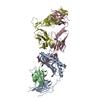
| ||||||||
|---|---|---|---|---|---|---|---|---|---|
| 1 |
| ||||||||
| Unit cell |
| ||||||||
| Components on special symmetry positions |
|
- Components
Components
-Protein , 2 types, 2 molecules AB
| #1: Protein | Mass: 32324.383 Da / Num. of mol.: 1 / Fragment: UNP residues 21-295 Source method: isolated from a genetically manipulated source Source: (gene. exp.)  Homo sapiens (human) / Gene: CD1D / Plasmid: pFastBac Dual / Production host: Homo sapiens (human) / Gene: CD1D / Plasmid: pFastBac Dual / Production host:  TRICHOPLUSIA NI (cabbage looper) / References: UniProt: P15813 TRICHOPLUSIA NI (cabbage looper) / References: UniProt: P15813 |
|---|---|
| #2: Protein | Mass: 11748.160 Da / Num. of mol.: 1 Source method: isolated from a genetically manipulated source Source: (gene. exp.)  Homo sapiens (human) / Gene: B2M, CDABP0092, HDCMA22P / Plasmid: pFastBac Dual / Production host: Homo sapiens (human) / Gene: B2M, CDABP0092, HDCMA22P / Plasmid: pFastBac Dual / Production host:  TRICHOPLUSIA NI (cabbage looper) / References: UniProt: P61769 TRICHOPLUSIA NI (cabbage looper) / References: UniProt: P61769 |
-NKT15 T cell receptor ... , 2 types, 2 molecules CD
| #3: Protein | Mass: 23227.652 Da / Num. of mol.: 1 Source method: isolated from a genetically manipulated source Source: (gene. exp.)  Homo sapiens (human) / Plasmid: PET / Production host: Homo sapiens (human) / Plasmid: PET / Production host:  |
|---|---|
| #4: Protein | Mass: 28033.189 Da / Num. of mol.: 1 Source method: isolated from a genetically manipulated source Source: (gene. exp.)  Homo sapiens (human) / Plasmid: PET / Production host: Homo sapiens (human) / Plasmid: PET / Production host:  |
-Sugars , 1 types, 2 molecules 
| #5: Sugar |
|---|
-Non-polymers , 3 types, 19 molecules 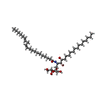




| #6: Chemical | ChemComp-DB3 / ( |
|---|---|
| #7: Chemical | ChemComp-MG / |
| #8: Water | ChemComp-HOH / |
-Details
| Has protein modification | Y |
|---|
-Experimental details
-Experiment
| Experiment | Method:  X-RAY DIFFRACTION / Number of used crystals: 1 X-RAY DIFFRACTION / Number of used crystals: 1 |
|---|
- Sample preparation
Sample preparation
| Crystal | Density Matthews: 2.81 Å3/Da / Density % sol: 56.19 % |
|---|---|
| Crystal grow | Temperature: 295 K / Method: vapor diffusion, hanging drop / pH: 8.8 Details: 8% PEG 10000, 0.2M magnesium chloride, 0.1M Tris, pH 8.8, VAPOR DIFFUSION, HANGING DROP, temperature 295K |
-Data collection
| Diffraction | Mean temperature: 100 K | ||||||||||||||||||
|---|---|---|---|---|---|---|---|---|---|---|---|---|---|---|---|---|---|---|---|
| Diffraction source | Source:  SYNCHROTRON / Site: SYNCHROTRON / Site:  APS APS  / Beamline: 17-ID / Wavelength: 0.979 Å / Beamline: 17-ID / Wavelength: 0.979 Å | ||||||||||||||||||
| Detector | Type: ADSC QUANTUM 210 / Detector: CCD / Date: Nov 23, 2008 | ||||||||||||||||||
| Radiation | Monochromator: Si(111) / Protocol: SINGLE WAVELENGTH / Monochromatic (M) / Laue (L): M / Scattering type: x-ray | ||||||||||||||||||
| Radiation wavelength | Wavelength: 0.979 Å / Relative weight: 1 | ||||||||||||||||||
| Reflection | Resolution: 3.093→100 Å / Num. obs: 19938 / % possible obs: 100 % / Observed criterion σ(F): 1 / Observed criterion σ(I): 1 / Redundancy: 12 % / Biso Wilson estimate: 85 Å2 / Net I/σ(I): 4.8 | ||||||||||||||||||
| Reflection shell |
|
- Processing
Processing
| Software |
| ||||||||||||||||||||||||||||||||||||||||||||||||||||||||||||||||||||||||||||||||||||||||||||||||||||||||||||||||||||||||||||||||||||||||||||||||||||||||||||||||||||||||||||||||||||||||||||||||||||||||
|---|---|---|---|---|---|---|---|---|---|---|---|---|---|---|---|---|---|---|---|---|---|---|---|---|---|---|---|---|---|---|---|---|---|---|---|---|---|---|---|---|---|---|---|---|---|---|---|---|---|---|---|---|---|---|---|---|---|---|---|---|---|---|---|---|---|---|---|---|---|---|---|---|---|---|---|---|---|---|---|---|---|---|---|---|---|---|---|---|---|---|---|---|---|---|---|---|---|---|---|---|---|---|---|---|---|---|---|---|---|---|---|---|---|---|---|---|---|---|---|---|---|---|---|---|---|---|---|---|---|---|---|---|---|---|---|---|---|---|---|---|---|---|---|---|---|---|---|---|---|---|---|---|---|---|---|---|---|---|---|---|---|---|---|---|---|---|---|---|---|---|---|---|---|---|---|---|---|---|---|---|---|---|---|---|---|---|---|---|---|---|---|---|---|---|---|---|---|---|---|---|---|
| Refinement | Method to determine structure:  MOLECULAR REPLACEMENT MOLECULAR REPLACEMENTStarting model: PDB ENTRY 3HUJ Resolution: 3.093→72.965 Å / Occupancy max: 1 / Occupancy min: 0.1 / SU ML: 0.48 / σ(F): 0 / σ(I): 0 / Phase error: 27.31 / Stereochemistry target values: ML
| ||||||||||||||||||||||||||||||||||||||||||||||||||||||||||||||||||||||||||||||||||||||||||||||||||||||||||||||||||||||||||||||||||||||||||||||||||||||||||||||||||||||||||||||||||||||||||||||||||||||||
| Solvent computation | Shrinkage radii: 0.9 Å / VDW probe radii: 1.11 Å / Solvent model: FLAT BULK SOLVENT MODEL | ||||||||||||||||||||||||||||||||||||||||||||||||||||||||||||||||||||||||||||||||||||||||||||||||||||||||||||||||||||||||||||||||||||||||||||||||||||||||||||||||||||||||||||||||||||||||||||||||||||||||
| Displacement parameters | Biso max: 180.75 Å2 / Biso mean: 69.2126 Å2 / Biso min: 15.41 Å2 | ||||||||||||||||||||||||||||||||||||||||||||||||||||||||||||||||||||||||||||||||||||||||||||||||||||||||||||||||||||||||||||||||||||||||||||||||||||||||||||||||||||||||||||||||||||||||||||||||||||||||
| Refinement step | Cycle: LAST / Resolution: 3.093→72.965 Å
| ||||||||||||||||||||||||||||||||||||||||||||||||||||||||||||||||||||||||||||||||||||||||||||||||||||||||||||||||||||||||||||||||||||||||||||||||||||||||||||||||||||||||||||||||||||||||||||||||||||||||
| Refine LS restraints |
| ||||||||||||||||||||||||||||||||||||||||||||||||||||||||||||||||||||||||||||||||||||||||||||||||||||||||||||||||||||||||||||||||||||||||||||||||||||||||||||||||||||||||||||||||||||||||||||||||||||||||
| LS refinement shell | Refine-ID: X-RAY DIFFRACTION / Total num. of bins used: 7
| ||||||||||||||||||||||||||||||||||||||||||||||||||||||||||||||||||||||||||||||||||||||||||||||||||||||||||||||||||||||||||||||||||||||||||||||||||||||||||||||||||||||||||||||||||||||||||||||||||||||||
| Refinement TLS params. | Method: refined / Refine-ID: X-RAY DIFFRACTION
| ||||||||||||||||||||||||||||||||||||||||||||||||||||||||||||||||||||||||||||||||||||||||||||||||||||||||||||||||||||||||||||||||||||||||||||||||||||||||||||||||||||||||||||||||||||||||||||||||||||||||
| Refinement TLS group |
|
 Movie
Movie Controller
Controller



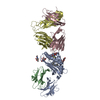

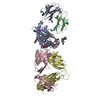
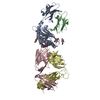
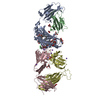
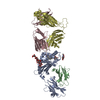
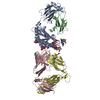
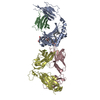
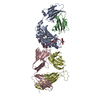


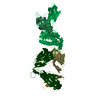

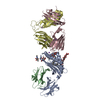
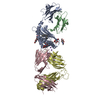
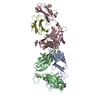
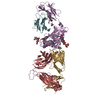
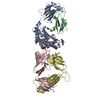
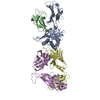
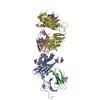
 PDBj
PDBj




